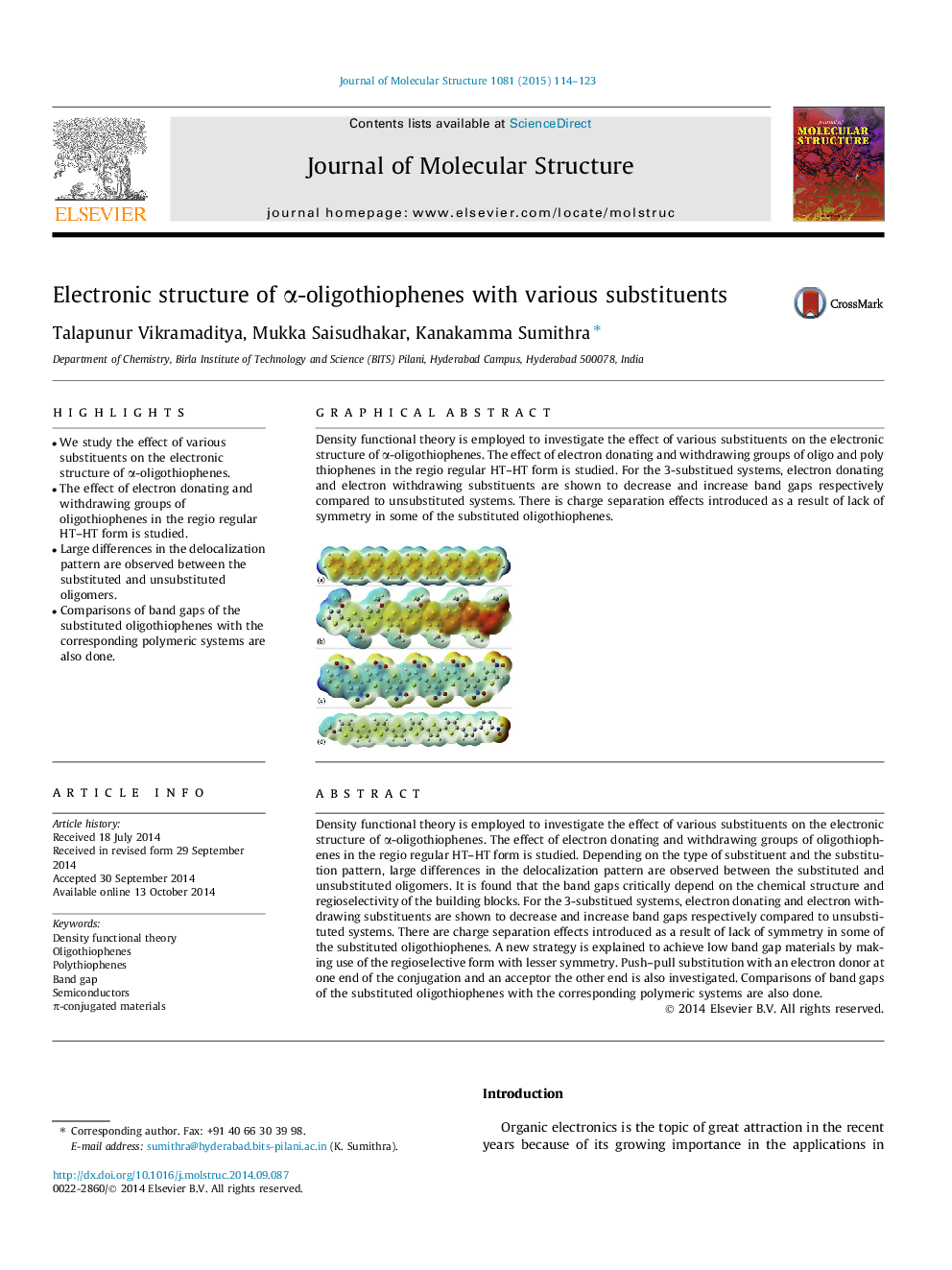| Article ID | Journal | Published Year | Pages | File Type |
|---|---|---|---|---|
| 1408313 | Journal of Molecular Structure | 2015 | 10 Pages |
•We study the effect of various substituents on the electronic structure of α-oligothiophenes.•The effect of electron donating and withdrawing groups of oligothiophenes in the regio regular HT–HT form is studied.•Large differences in the delocalization pattern are observed between the substituted and unsubstituted oligomers.•Comparisons of band gaps of the substituted oligothiophenes with the corresponding polymeric systems are also done.
Density functional theory is employed to investigate the effect of various substituents on the electronic structure of α-oligothiophenes. The effect of electron donating and withdrawing groups of oligothiophenes in the regio regular HT–HT form is studied. Depending on the type of substituent and the substitution pattern, large differences in the delocalization pattern are observed between the substituted and unsubstituted oligomers. It is found that the band gaps critically depend on the chemical structure and regioselectivity of the building blocks. For the 3-substitued systems, electron donating and electron withdrawing substituents are shown to decrease and increase band gaps respectively compared to unsubstituted systems. There are charge separation effects introduced as a result of lack of symmetry in some of the substituted oligothiophenes. A new strategy is explained to achieve low band gap materials by making use of the regioselective form with lesser symmetry. Push–pull substitution with an electron donor at one end of the conjugation and an acceptor the other end is also investigated. Comparisons of band gaps of the substituted oligothiophenes with the corresponding polymeric systems are also done.
Graphical abstractDensity functional theory is employed to investigate the effect of various substituents on the electronic structure of α-oligothiophenes. The effect of electron donating and withdrawing groups of oligo and poly thiophenes in the regio regular HT–HT form is studied. For the 3-substitued systems, electron donating and electron withdrawing substituents are shown to decrease and increase band gaps respectively compared to unsubstituted systems. There is charge separation effects introduced as a result of lack of symmetry in some of the substituted oligothiophenes.Figure optionsDownload full-size imageDownload as PowerPoint slide
